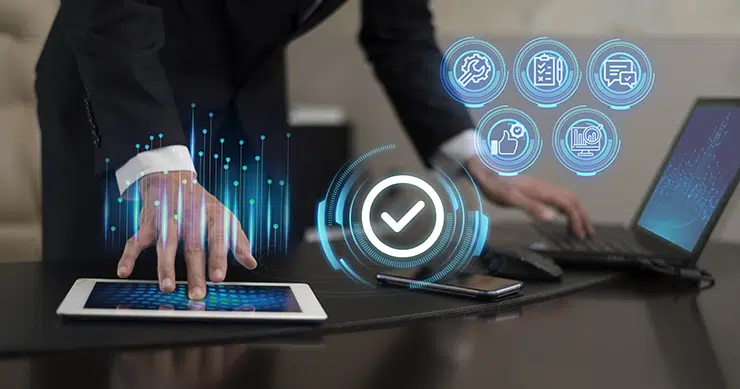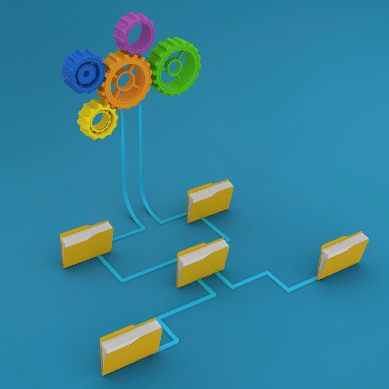What is Risk Control?
Risk control refers to the systematic and proactive measures and strategies put in place by organizations to minimize, mitigate, or manage the various risks they face. The primary goal of risk control is to reduce the likelihood of adverse events occurring and to limit their impact if they do occur. It involves identifying potential risks, implementing preventive measures, and establishing contingency plans to respond effectively to unforeseen events.

Risk Control vs. Risk Management
Risk management is a more comprehensive and holistic operation than risk control.
Risk control strategies encompass identifying, assessing, and treating various types of risks across an organization or project.
Risk management involves a holistic approach that analyzes all potential risks, including emerging risks resulting from technological advancements and cybersecurity threats. In simple terms, risk control is a component of risk management, albeit important, while risk management encompasses a more extensive scope.
The Three Risk Categories
Let’s explain the three primary risk categories:
1. Preventable Risks
Preventable risks are those that organizations can mitigate or eliminate by implementing internal controls. These include operational risks like processes, system breakdowns, or human errors. To manage preventable risks effectively, organization controls, policies, and procedures.
2. Strategy Risks
Strategic risks are ass to manage preventable risks by achieving strategic business objectives, such as entering new markets, launching products or services, or adapting to new regulations. These risks often result from factors beyond a company’s control, such as economic downturns or disruptive technologies. Managing strategic risks requires regular risk control self-assessments, contingency planning, and alignment with overall business objectives.
3. External Risks
External risks beyond an organization’s control may include political instability, natural disasters, or cyberattacks. While nobody can entirely prevent them, companies can identify and mitigate their potential impact. A robust risk management framework helps organizations evaluate external risks and take measures to minimize their effects.
What is the Hierarchy of Risk Controls in Cyber Security?
The hierarchy of risk control, often referred to as the hierarchy of hazard control, is a structured framework employed to reduce, mitigate, or eliminate the exposure to potential hazards in the workplace.
This framework is predominantly used in industrial settings such as manufacturing, construction, oil and gas, mining, among others. These industries often experience higher incident rates and a greater prevalence of hazards, making the hierarchy of risk control an essential tool for enhancing safety.
Just as in workplace safety, the hierarchy of risk control is a valuable framework for addressing cyber risk systematically and effectively. It offers a structured approach to identify, assess, and mitigate cyber threats, employing a ranking system of control measures from the most robust protection down to the least reliable.
Start Getting Value With
Centraleyes for Free
See for yourself how the Centraleyes platform exceeds anything an old GRC
system does and eliminates the need for manual processes and spreadsheets
to give you immediate value and run a full risk assessment in less than 30 days
The Six Steps of Risk Control Hierarchy in Cybersecurity
Level 1: Eliminating the Risk
At the core of cyber risk control is risk elimination, the highest level of protection. The goal here is to prevent cyber risks from materializing in the first place. This starts with identifying and assessing vulnerabilities and threats within your organization’s digital infrastructure and systems. Once identified, the most effective control measure is to eliminate these risks wherever possible. For instance:
- Closing unnecessary ports and services on your network to reduce the attack surface.
- Decommissioning or replacing legacy systems that are no longer supported and pose security risks.
- Educating employees on cybersecurity best practices to reduce the likelihood of human error leading to breaches.
Level 2: Substituting the Risk
When complete elimination isn’t feasible, the next step is risk substitution in the cyber context. This involves replacing a high-risk element with a lower-risk alternative. For instance:
- Substituting vulnerable software or applications with more secure alternatives.
- Transitioning from passwords to multi-factor authentication (MFA) for enhanced account security.
Level 3: Isolate the Risk
Cyber risk isolation aims to separate critical systems and data from potential threats. This can involve:
- Network segmentation to isolate sensitive data and systems from the broader network.
- Implementing firewalls and intrusion detection/prevention systems to create barriers between internal systems and external threats.
Level 4: Engineering Controls
Engineering controls in cybersecurity focus on designing and implementing security features into your digital infrastructure. These controls target the source of cyber threats and can reduce harm by:
- Encrypting sensitive data to protect it from unauthorized access.
- Regularly patching and updating software and systems to address known vulnerabilities.
- Employing network monitoring tools to detect and respond to cyber threats in real-time.
Level 5: Administrative Controls
Administrative controls involve implementing policies, procedures, and user training to enhance cybersecurity awareness and practices. Examples include:
- Developing and enforcing an IT security policy that outlines acceptable use and security protocols.
- Conducting regular cybersecurity training and awareness programs for employees.
- Creating an incident response plan to guide actions in case of a security breach.
Level 6: Personal Protective Equipment (PPE)
In the realm of cybersecurity, personal protective equipment equates to the use of risk control technologies or tools to provide an additional layer of defense. This includes:
- Deploying antivirus and anti-malware software to protect against known threats.
- Implementing intrusion detection systems to monitor network traffic for suspicious activities.
By following this hierarchy of risk control in cybersecurity, organizations can systematically assess and address cyber threats, ultimately strengthening their cybersecurity posture and reducing the likelihood and impact of cyberattacks.
Elevate Your Risk Management with Centraleyes
Centraleyes is more than a platform; it’s a strategic partner in your organization’s journey to master risk control and management. With Centraleyes, you gain a comprehensive, dynamic, and proactive tool that empowers you to navigate risks effectively, safeguard your operations, and secure long-term success.
At Centraleyes, we’ve built a risk control matrix to recognize and evaluate potential risks and control measures within a project, procedure, or system. The matrix, along with our advanced risk register, aids in the prioritization of tasks, tracking of advancements, and assurance of adherence to applicable standards and regulations.
Schedule a demo with Centraleyes today to discover how this cutting-edge platform can elevate your risk control and management capabilities, helping you thrive in an ever-changing business landscape.
Don’t just manage risk; master it with Centraleyes.
Start Getting Value With
Centraleyes for Free
See for yourself how the Centraleyes platform exceeds anything an old GRC
system does and eliminates the need for manual processes and spreadsheets
to give you immediate value and run a full risk assessment in less than 30 days





